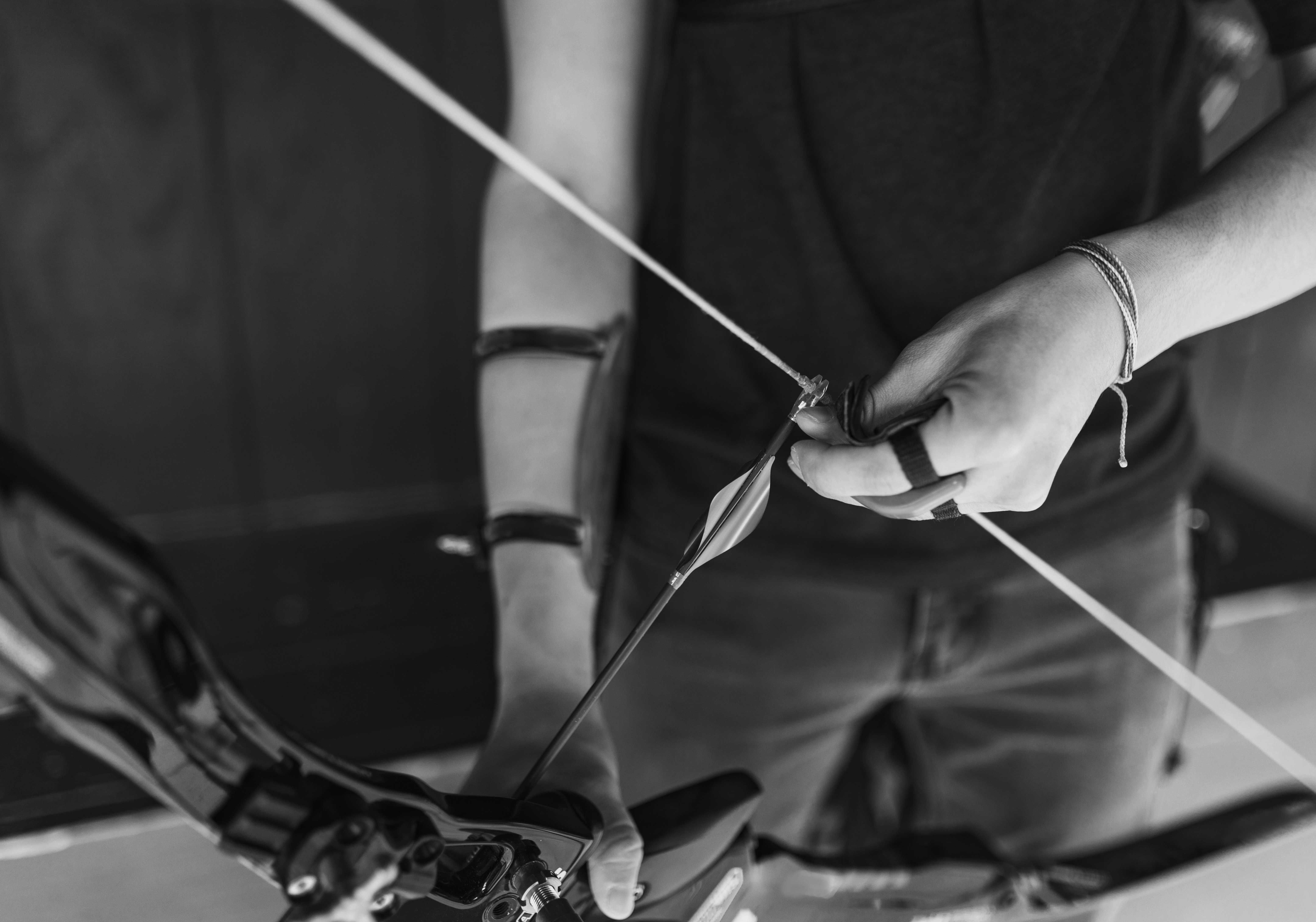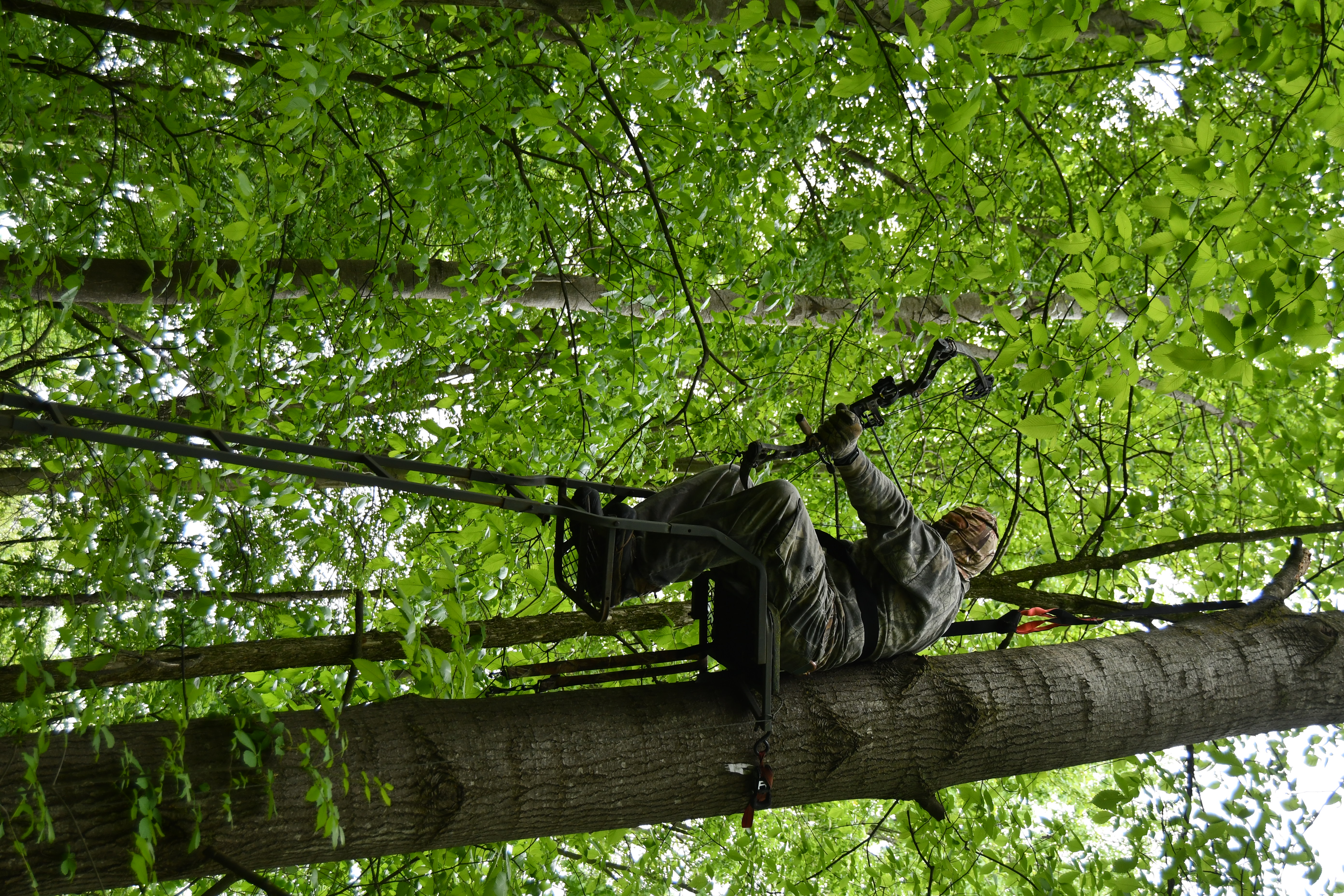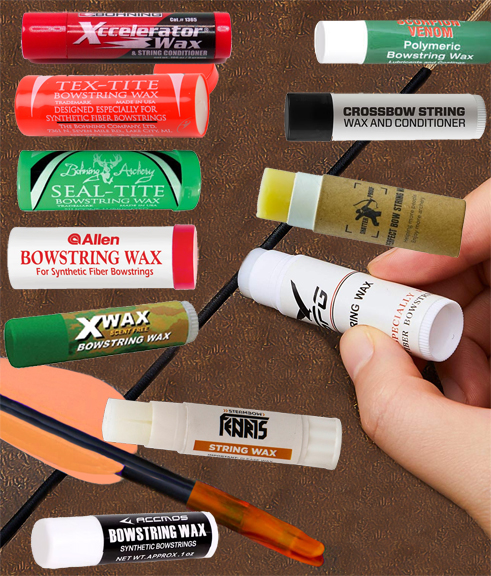My dad was a tournament archer in the mid to late 1960s. He cut his teeth on a Bear recurve shooting instinctively -- no sights. When he died, I found all his ribbons and trophies stashed in a heavy drawer in his workroom. He knew what he was talking about when it came to archery, but I wonder sometimes if he didn't stretch the truth to ease his young son's mind.

Each bow has a string that needs to be reliable.
He taught me how to shoot a bow - yes with a recurve - and instinctive. I got pretty good, but never as good as he was. I could kill a deer. He could tell you what tuft of hair the arrow was going to penetrate.
He was whipping my pre-teen self into bowhunting shape one September afternoon, guiding my draw, concentrating on my anchor point, and making sure my left arm didn't drop after each shot. My bowstring was frayed toward the bottom limb. I had accidentally done this with a razor-sharp broadhead, but I didn't admit it to him. I pointed it out and I can remember his reassuring voice.
"I'll change the string when we get back home. Don't worry about that string right now. If it breaks, it won't hurt you - and you'll get the truest arrow that you've ever shot. There will be no plucking the string when you release it and you'll be so surprised that you won't be dropping that left arm to see where your arrow hit the target."
The string didn't break on me that day, but those words imprinted in my brain for life.
A decade later, I was discussing archery with a friend at work and I told him about that. He made a facial gesture as if I'd just taught him something. I think it was four or five years later when my friend looked me up and wanted to talk.

"Tell your dad he's full of it! I was at full draw last evening on a small 6 point when my string broke. Guess where the arrow went? It fell on the ground at my feet!"
I was perplexed, but upon considerable thought it only makes sense that the limb's forward force on the string is negated if the string breaks. I think I was bamboozled by my dad so I wouldn't worry about a frayed bowstring and would concentrate on shooting right!
From that day on, I paid much more attention to my bowstrings. I certainly wouldn't want my arrow dropping at my feet when a nice 6 pt. buck was broadside at 20 yards!
Bowstring Basics
Every bow -- recurve, longbow, compound, or crossbow -- relies on a single piece of gear that doesn't get enough attention: the string. It carries every ounce of energy from the limbs to the arrow. And yet, it's the one part most hunters neglect until it's too late.
A bowstring under tension is like a truck tire running at highway speed. You might ignore it for weeks, but when it fails, it fails *catastrophically*. With bows, that means missed opportunities, damaged equipment, and in the worst case, injury.

Daily Care: Wax is Cheap Insurance
Bowstring wax isn't glamorous, but it's the cheapest insurance you can buy. Wax keeps fibers lubricated, reduces wear from abrasion, and protects from moisture. A good rule of thumb:
- If your string feels dry or fuzzy, it needs wax.
- If it feels tacky and slick, it's good to go.
It takes 30 seconds. Rub a small amount into the string with your fingers until it warms and soaks in. Don't cake it on -- too much wax just collects grit. Think "thin coat of oil," not "grease job."
Watch the Hot Spots
Strings don't usually fail in the middle. Trouble starts where the string meets the bow:
- Nocking point/center serving -- sharp nocks and repeated shots wear down fibers.
- Cam tracks and idler wheels (compound bows) -- look for flat spots, serving separation, or fuzzing.
- Limb tips (traditional bows) -- especially if you've ever nicked them with a broadhead.
A little fray is a warning sign. Serving that's unraveling is a trip to the bow shop. If you see broken strands or separation, stop shooting immediately.
Replacement Intervals
Every manufacturer gives a service life, but hunters love to push limits. A realistic schedule:
- Compound bows: Replace every 2--3 years with average use, sooner if you shoot often.
- Recurves/longbows: Replace when you see fray or serving separation.
- Crossbows: Strings and cables wear faster due to high draw weights -- inspect after every use and expect replacement every 1--2 years.
It's cheaper to replace a string early than to replace a limb, cam, or your front tooth after a break.

Storage and Off-Season Care
Heat, sunlight, and moisture are string killers. A bow left in a hot truck can weaken a string in a single summer. Off-season storage tips:
- Unstring traditional bows if you won't shoot for weeks.
- Keep compounds in a cool, dry space.
- Use a bow case to protect from dust and UV light.
When Disaster Strikes
Yes, strings can and do break in the field. It's rare, but every bowhunter who's been at it long enough has seen it. The difference is whether it ruins your hunt or just slows you down.
Carrying a spare string isn't crazy. For recurves and longbows, it's easy. For compounds and crossbows, it's more complicated -- but at minimum, carry a small tube of wax, a few servings of dental floss or serving thread for quick wraps, and the knowledge that prevention is far easier than a mid-season replacement.
Confidence at Full Draw
Archery is 90% mental. If you're worrying about your string every time you draw, you're already behind. Confidence comes from knowing your gear is ready. When the buck steps into your lane, your focus should be on your anchor, your release, and the hair you're aiming at -- not whether your string will hold.
Most people probably don't give their bowstring a second thought. With just a little care, you can put it at the back of your mind, knowing that you're as prepared as you can be for that one special shot. This fall, as you're taking a few tune-up shots and practicing for archery deer season, that string will be the least of your concerns. Your biggest question will be,
"Do I have enough freezer space for this deer?"